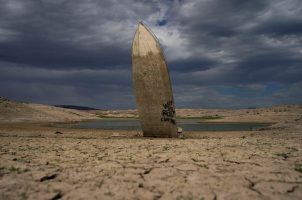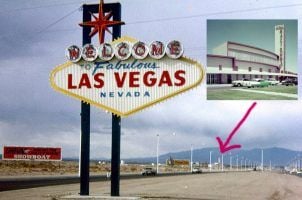Colorado River Snowpack Reaches 158%, Easing Las Vegas Drought
Posted on: March 28, 2023, 09:57h.
Last updated on: March 28, 2023, 10:07h.
Las Vegas and surrounding Clark County are now in a “severe drought.” That sounds bad, but it’s actually two entire categories of drought better than the “exceptional drought” the region was in only seven months ago. The US Drought Monitor, which defines the categories and applies them via updates every Thursday, has no category worse than “exceptional drought.”

The reason for the good news is a series of storms from the southern Pacific Ocean that brought much-needed moisture to the region. Those storms also raised the snowpack in the Colorado Rockies to 158% of normal. That’s up 8% in merely a week.
This snowpack is crucial because it supplies the Colorado River with nearly all its water. In the Colorado Headwaters region, the source of the river, the snowpack is 134% of normal. In the mountains of the Four Corners, it’s a whopping 477% of normal.
And the snowpack still has a week to go before it begins to melt and flow downstream into Lake Powell on the Utah-Arizona border through July.
Hitting Pause on the Drought
This temporary good news in no way spells an end to the American Southwest’s water crisis. Climate experts believe the megadrought plaguing the region for the last 23 years is a permanent condition caused by a 20% decrease in the Colorado River’s flow.
This, they believe, is due to a 2.5-degree average temperature increase along the river. Rising temperatures accelerate evaporation and cause drier soil that worsens the Colorado’s runoff efficiency. This means that even average snow years still lead to below-average water flow.

The elevated snowpack — about enough to supply the needs of all 40M Colorado River water users for a year — does press the pause button on imminent disaster. Water officials intend to use this water to attempt to set the drought clock back as far as possible before the situation likely returns to the new normal again.
That new normal would be a three-year subnormal snowpack trend culminating in 2022’s alarmingly low level of 83.9% of normal.
Lake Mead Won’t Get a Rise
Lake Mead, which supplies Las Vegas with about 90% of its water, is currently only 28% full and won’t receive a direct boost from the increased water flow. That’s because water officials plan to use the water to refill Arizona’s Lake Powell instead. At only 22% full, its Glen Canyon Dam is in critical danger of no longer being able to generate hydropower for the region.
Because of its low water level, Lake Powell’s power plant only generates 60% of the 5B kilowatt-hours it was designed to produce.
The US Bureau of Reclamation, which monitors water levels nationally, has warned that Lake Mead’s water levels could fall to 895 feet within a few years. This is known as dead pool, the point at which the gravity will no longer allow water to flow past the dam to points downstream, including California, Arizona, and Mexico. If the water no longer flows past the dam, it also will no longer produce electricity.
Related News Articles
Filling Lake Mead with Mississippi River Water No Longer a Pipe Dream
VEGAS MYTHS BUSTED: Las Vegas Was Built on Barren Desert Terrain
Most Popular
FTC: Casino Resort Fees Must Be Included in Upfront Hotel Rates
Genovese Capo Sentenced for Illegal Gambling on Long Island
NBA Referees Expose Sports Betting Abuse Following Steve Kerr Meltdown
UPDATE: Former Resorts World & MGM Grand Prez Loses Gaming License
Most Commented
-
UPDATE: Whiskey Pete’s Casino Near Las Vegas Closes
— December 20, 2024 — 30 Comments -
Caesars Virginia in Danville Now Accepting Hotel Room Reservations
— November 27, 2024 — 9 Comments -
UPDATE: Former Resorts World & MGM Grand Prez Loses Gaming License
— December 19, 2024 — 8 Comments -
FTC: Casino Resort Fees Must Be Included in Upfront Hotel Rates
— December 17, 2024 — 7 Comments
















Last Comment ( 1 )
Tell California to agree to the cut backs the other states have agreed to!!